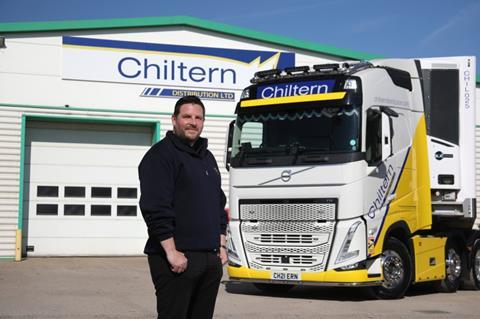
Chiltern Distribution is set to save around 7,200-litres of fuel per vehicle per year after fitting Michelin's low rolling resistance Energy tyre ranges across 19 new Volvo and Scania trucks, the company has revealed.
The Peterborough-based business, which runs a 54-strong fleet of trucks and specialises in the food and pharmaceutical sectors, is reporting a consistent return of more than 10 mpg at 44-tonnes, with some trucks exceeding 11mpg at maximum weight.
Chiltern Distribution specified 315/70 R22.5 Michelin X Line Energy Z2 and D2 tyres for its new Volvo FH 460 with I-Save tractor units, and Michelin X Multi Energy Z and D tyres for the Scania S 500 tractor units, with the aim of boosting fuel efficiency and lowering each truck’s VECTO score.
Brian Sagaseta, Chiltern Distribution managing director, said: "Michelin has always been our go-to product, driven by serviceability, longevity and reliability. More recently, by selecting the latest generations of fuel-saving tyres, we’re also getting great efficiency and miles per gallon.
Read more
- Buffaload to open new chilled site with Chiltern
- Former JD Wetherspoon man joins Buffaload
- Fred Sherwood seals three-year tyre deal with Michelin
“It’s critical to match the right tyre with the right truck; because if you don’t, then you’re never going to unlock a vehicle’s maximum fuel potential. As our own data has proven, our tyre choice is saving us money and lowering our CO2 emissions. It’s a win-win situation.”
Michelin X Line Energy Z2 and D2 tyres are both A-rated for fuel efficiency, whilst the manufacturer's X Multi Energy tyres are B-rated. As part of the wider X Multi range, the tyres qualify for Michelin’s free accidental tyre damage guarantee, which covers accidental damage before each tyre is 50% worn.
Sagaseta said: “Both Michelin fuel-saving ranges are delivering for us on all counts – and that’s increasingly important given the rising cost of diesel and our focus on sustainability and reducing carbon emissions.”
He added that he has identified a difference in fuel performance of around 1.85mpg, when comparing the new X Line Energy-shod Volvos with the older models they replaced, which ran on standard regional tyres.
Sagaseta calculates that, for a single vehicle averaging 140,000km per year, there is a saving of around 7,000 to 7,200 litres of fuel.














